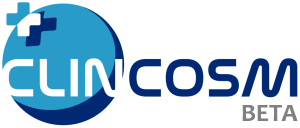Subcutaneous Immunoglobulin Treatment of Patients With Chronic Inflammatory Demyelinating Polyradiculoneuropathy (CIDP)
Study Details
Study Description
Brief Summary
The purpose of this study is to determine whether subcutaneous immunoglobulin given in small doses, is effective in maintaining the force, in patients with chronic inflammatory demyelinating polyradiculoneuropathy compared with placebo (saline infusions), and intravenous immunoglobulin.
| Condition or Disease | Intervention/Treatment | Phase |
|---|---|---|
|
Phase 2 |
Detailed Description
CIDP is an autoimmune disease of the peripheral nervous system, responding well to treatment with intravenous immunoglobulin (IVIg), steroids and plasmapheresis. IVIg is effective in treating patients with CIDP, but most of the patients need long time maintenance treatment, which is associated with decreased autonomy and regular hospital admissions. Furthermore many of the patients complain of infusion related side effects such as headache, chills and fatigue, and over time there is problems obtaining intravenous entry because of occlusion of the veins.
There is therefore a critical need for alternative methods to IVIg treatment. The aim of this study is to evaluate the efficacy, tolerability and safety of small doses of immunoglobulin administered subcutaneously (SCIg), compared with placebo. At the same time we compare the efficacy of SCIg with the regular IVIg treatment.
We therefore hypothesize, 1: SCIg is better than subcutaneous placebo infusions, and is as good as IVIg in maintaining muscle function in patients with CIDP. 2: SCIg home treatment is safe and tolerable. 3: SCIg home treatment is preferred to IVIg under hospital admission, by the patients.
Study Design
Arms and Interventions
| Arm | Intervention/Treatment |
|---|---|
| Active Comparator: Subcutaneous immunoglobulin
|
Drug: Subcutaneous immunoglobulin
The subcutaneous immunoglobulin is infused in the subcutaneous tissue on the abdomen twice or thrice a week, with a maximal speed of 2 mL/h. Every time 20 mL is infused, the needle is removed to a new place.
Other Names:
|
| Placebo Comparator: Saline
|
Drug: Subcutaneous immunoglobulin
The subcutaneous immunoglobulin is infused in the subcutaneous tissue on the abdomen twice or thrice a week, with a maximal speed of 2 mL/h. Every time 20 mL is infused, the needle is removed to a new place.
Other Names:
|
Outcome Measures
Primary Outcome Measures
- Strength assessed by isokinetic strength measurements, in the active treatment group compared with the placebo group. [The study period is 98 days. Isokinetic strength will be measured on day 14, 28, 84 and 98 of the study period. If there is a drop-out before day 84, the strength measurement will take place on this day, and the last two measurements will be left out.]
Secondary Outcome Measures
- Efficacy and feasibility of subcutaneous immunoglobulin infusions. [Feasibility will be recorded continously in a patient diary and in the CRF (case report form), and efficacy will be calculated at the end of the study, after approximately three months.]
Eligibility Criteria
Criteria
Inclusion Criteria:
- All patients with typical or pure motor CIDP, who meet the clinical or electrophysiological criteria of the EFNS/PNS for certain or probable CIDP and who are in regular treatment with IVIg on one of the neurological departments in Denmark, are eligible for the study
Exclusion Criteria:
-
Pregnancy
-
Known cancer disease
-
Severe medical diseases
-
Other immuno modulating treatment than low-dose steroid (prednisolone < 25 mg/day) within the last 6 weeks before inclusion
-
Hepatitis B or C or HIV
-
Breast-feeding
-
Non-responding to treatment with intravenous immunoglobulin
-
Known hypersensitivity to intravenous immunoglobulins or Kiovig
Adverse events:
-
Previous moderate headache or minor rash for a few days during or after infusion is not an exclusion criteria
-
In case of severe adverse effects to treatment patients are excluded. Moderate or mild side-effects can be treated with analgetics or steroids for 1-2 weeks during the initial study phase
Contacts and Locations
Locations
| Site | City | State | Country | Postal Code | |
|---|---|---|---|---|---|
| 1 | Aarhus University Hospital, Noerrebrogade, Department of Neurology | Aarhus | Denmark | 8000 |
Sponsors and Collaborators
- University of Aarhus
- Baxter Healthcare Corporation
- GCP-unit at Aarhus University Hospital, Aarhus, Denmark
Investigators
- Principal Investigator: Johannes Jakobsen, Dr., MD,
Study Documents (Full-Text)
None provided.More Information
Publications
None provided.- EudraCT number: 2009-013930-25
